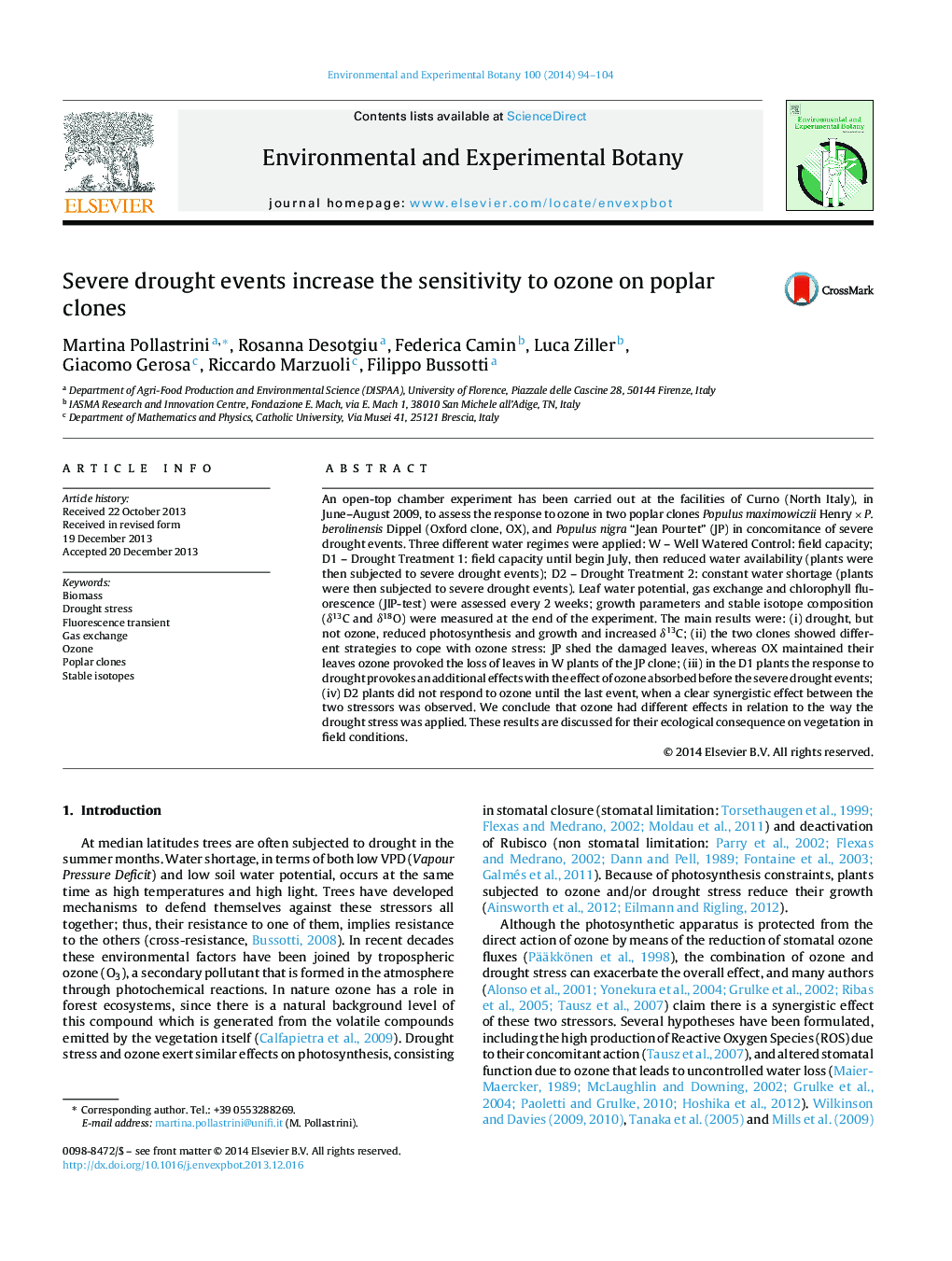| Article ID | Journal | Published Year | Pages | File Type |
|---|---|---|---|---|
| 4554382 | Environmental and Experimental Botany | 2014 | 11 Pages |
•Two poplar clone were subjected to drought and ozone stress.•Stem biomass and stable isotopes composition are more affected by drought than by ozone.•Ozone provokes foliar symptoms, leaf loss, and affects root/shoot ratio.•Leaves are protected by ozone when drought is administered from the begin of the growth season.•Severe drought events enhance the action of ozone, especially when drought is administrated later in the season.
An open-top chamber experiment has been carried out at the facilities of Curno (North Italy), in June–August 2009, to assess the response to ozone in two poplar clones Populus maximowiczii Henry × P. berolinensis Dippel (Oxford clone, OX), and Populus nigra “Jean Pourtet” (JP) in concomitance of severe drought events. Three different water regimes were applied: W – Well Watered Control: field capacity; D1 – Drought Treatment 1: field capacity until begin July, then reduced water availability (plants were then subjected to severe drought events); D2 – Drought Treatment 2: constant water shortage (plants were then subjected to severe drought events). Leaf water potential, gas exchange and chlorophyll fluorescence (JIP-test) were assessed every 2 weeks; growth parameters and stable isotope composition (δ13C and δ18O) were measured at the end of the experiment. The main results were: (i) drought, but not ozone, reduced photosynthesis and growth and increased δ13C; (ii) the two clones showed different strategies to cope with ozone stress: JP shed the damaged leaves, whereas OX maintained their leaves ozone provoked the loss of leaves in W plants of the JP clone; (iii) in the D1 plants the response to drought provokes an additional effects with the effect of ozone absorbed before the severe drought events; (iv) D2 plants did not respond to ozone until the last event, when a clear synergistic effect between the two stressors was observed. We conclude that ozone had different effects in relation to the way the drought stress was applied. These results are discussed for their ecological consequence on vegetation in field conditions.
Graphical abstractFigure optionsDownload full-size imageDownload as PowerPoint slide
